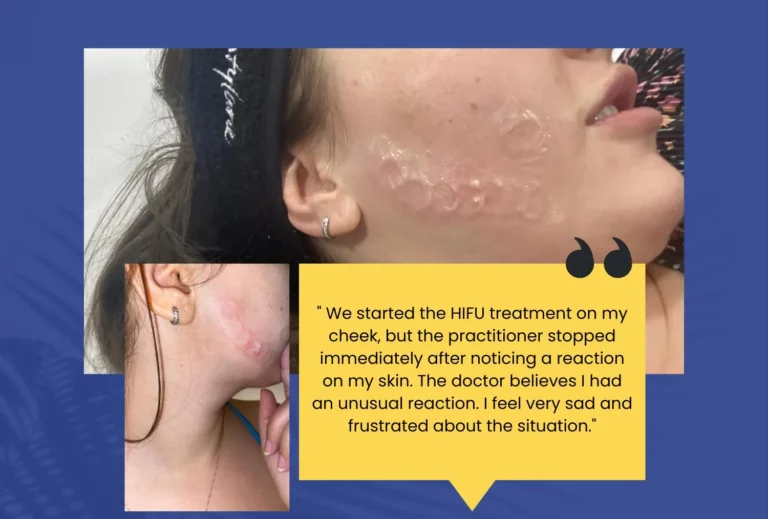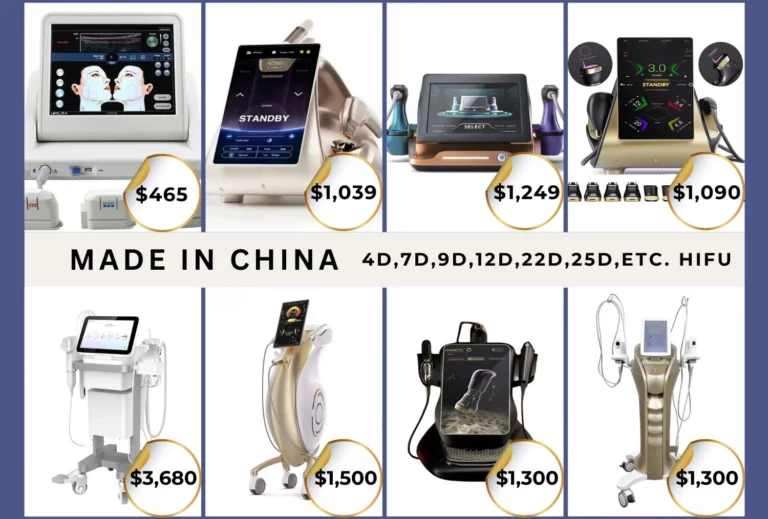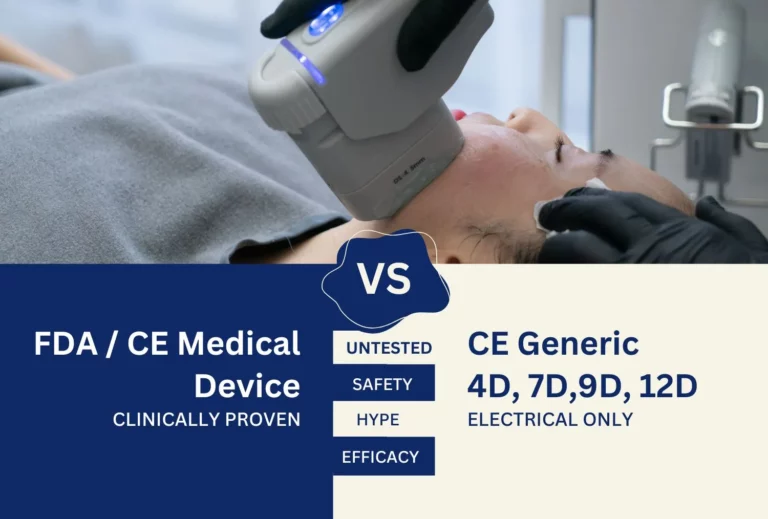Many patients notice a slight lifting and tightening immediately after a HIFU procedure, which naturally raises questions: "How is this possible?" and "Does this mean that the HIFU effect is already present?"
In fact, these early results are not related to the long-term effect of the therapy, but to physiological reactions of the tissues to the high-frequency energy. We examine the three main mechanisms that explain the visible, but temporary improvement immediately after the procedure:
1. Thermal shrinkage of collagen fibers
HIFU (High-Intensity Focused Ultrasound) uses focused ultrasound energy that penetrates the skin to a precisely calculated depth, usually around 1.5mm, 3mm and 4.5mm depending on the tip used. When temperatures of around 60-70°C are reached, this energy causes an immediate shortening and densification of collagen fibres – a process called thermal coagulationThis thermal shrinkage is the cause of immediate, albeit temporary, visual effect of tight skin in the first minutes or hours after the procedure.
2. Temporary swelling and inflammatory reaction after HIFU procedure
Immediately after HIFU therapy, the skin often reacts with slight redness and swelling. This is a normal response of the body to the micro-injuries caused by the thermal energy. The swelling creates a feeling of tension and volume in the treated area, further enhancing the illusion of tightening. This effect is temporary and disappears within a few hours to a few days, depending on individual sensitivity and the intensity of the procedure.
3. Stimulation of neocollagenesis
The real action of HIFU begins in the days and weeks following the procedure. The ultrasound energy activates fibroblasts – the cells responsible for the synthesis of new collagen and elastin fibers. This process, called neocollagenesis, is gradual and takes time. Usually the first real results become visible after about 4 to 6 weeks. The full effect after a HIFU procedure develops gradually and reaches its maximum between 2 and 3 months after the procedure.
Conclusion: The initial result can be motivating, but it should not be confused with the long-term effect of HIFU therapy. It is good to inform users that this “first impression” is only the beginning of a biological process that requires time to unfold to its full potential.



